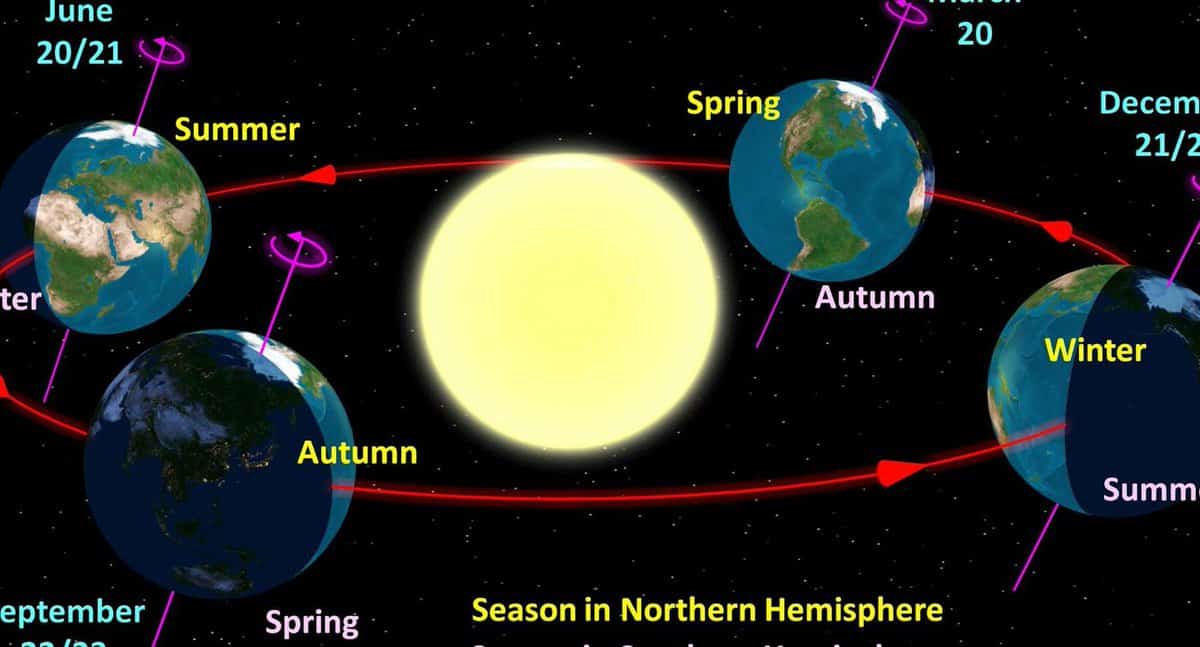Orbit – 1) In astronomy, the trajectory of a celestial body as it moves through outer space in relation to another celestial body. For example: The orbit of Mars.
2) A metaphorical meaning of what or which. The range of influence, the extent of something. For example: To bring within one’s sphere of influence.
3) Also known as “eye socket”. For example, The watchman slowly raised his eyebrows; beneath them, round, dark eyes were heavy in their deep orbits. M. Gorky, “The Three”.
4) The term “orbit” is also used in atomic physics to describe electron configurations [1].
Orbiting in the Field of Astronomy
An orbit is the designated path that a celestial body follows through the vast expanse of space. While an orbit can encompass the trajectory of any celestial entity, it typically pertains to the interrelated motion of celestial bodies. For instance, this includes the orbits of planets revolving around the Sun, satellites encircling a planet, or stars within a complex stellar system revolving around a shared center of mass. When an artificial satellite initiates its cyclical movement around the Earth or the Sun, it is said to have “entered orbit” [2].
An orbit can assume various shapes, including elliptical, circular, or parabolic. A circular orbit represents a special instance of an orbit that has a slightly greater degree of ellipticity. In such cases, a celestial body traverses along the same path while maintaining a constant distance from the central body.
An orbit plays a crucial role in the field of astronomy as it determines numerous characteristics of the movement of celestial objects. By studying an orbit, astronomers are able to make predictions about the whereabouts and future motion of planets, stars, and other space objects [3].
Distinguishing between absolute and relative orbits
An absolute orbit refers to the trajectory of a celestial body within a frame of reference that can be considered universal and absolute in some sense. This frame of reference is the entire Universe on a large scale and is referred to as an “inertial system”.
A relative orbit refers to the trajectory of a celestial body in relation to a reference frame that is also moving along an absolute orbit. This absolute orbit follows a curved path with varying speed. For instance, the orbit of a man-made satellite typically provides information about its dimensions, configuration, and alignment in relation to the Earth. In a general sense, this orbit can be approximated as an ellipse, with the Earth located at its focal point and the plane remaining stationary relative to the stars. It is important to note that this orbit is relative to the Earth, which in turn orbits the Sun.
To an outside observer, the movement of the satellite in relation to the stars can be described as a complex helical trajectory, which is referred to as its absolute orbit. It is important to note that the shape of the orbit is influenced by the observer’s frame of reference. The distinction between absolute and relative orbits is necessary because Newton’s laws only apply in an inertial frame of reference, making them applicable only to absolute orbits. However, when observing the motion of celestial bodies, we are always dealing with relative orbits as we observe them from the perspective of the orbiting Sun and rotating Earth. Nevertheless, if the absolute orbit of the Earth observer is known, it is possible to convert all relative orbits into absolute ones or represent Newton’s laws using equations that hold true in the Earth’s reference frame.
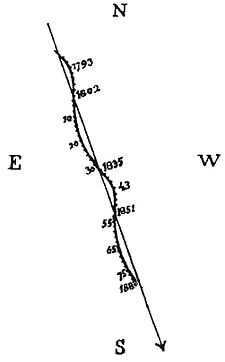
By determining the position of Sirius B in relation to Sirius A, we can establish a relative orbit. The separation between these two stars is consistently equivalent to the combined distances from the center of mass. As a result, the relative orbit maintains the same shape as the absolute orbit and its size is equal to the sum of their distances. With knowledge of the relative orbit’s size and the orbital period, we can utilize Kepler’s third law to exclusively determine the total mass of the stars [2].
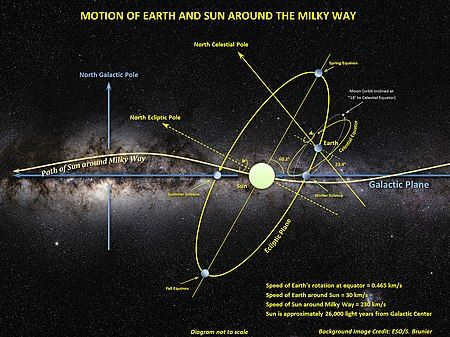
An example that is more intricate involves the movement of the Earth, the Moon, and the Sun. Each of these celestial bodies follows its own distinct path around a central point of mass. However, due to the Sun’s immense mass, it is conventional to represent the Moon and the Earth as a unit whose center of mass traces an elliptical orbit in relation to the Sun. Nevertheless, this orbit is nearly identical to the individual orbits of each body.
The precise measurement of the Earth’s motion in relation to the Earth-Moon system’s center of mass can be achieved using radio telescopes, which can determine the distance to interplanetary stations. During the Mariner-9 spacecraft’s mission to Mars in 1971, the Earth’s motion amplitude was accurately calculated to be 20-30 meters by observing periodic changes in the distance to Mars. The center of mass of the Earth-Moon system is located within the Earth, approximately 1700 kilometers below its surface. The ratio of the Earth’s mass to the Moon’s mass is 81.3007. By knowing the total mass of the system, which can be determined from the relative orbit parameters, it becomes straightforward to calculate the mass of each individual body.
When it comes to the concept of relative motion, we have the freedom to select a specific point of reference. For instance, the relative path of the Earth as it revolves around the Sun is identical to the relative path of the Sun as it revolves around the Earth. This path, when projected onto the celestial sphere, is known as the “ecliptic”. Throughout the span of one year, the Sun moves approximately 1 degree per day along the ecliptic, and from the perspective of the Sun, the Earth moves in the exact same manner. The ecliptic plane is inclined at an angle of 23 degrees and 27 minutes in relation to the celestial equator, which represents the angle between the Earth’s equator and its orbital plane. In the solar system, all orbits are oriented relative to the ecliptic plane [2].
Orbits of the Moon and planets
Let’s take the Moon as an example to demonstrate how an orbit is described. It is a relative orbit that is inclined at an angle of about 5° to the ecliptic. This angle is known as the “inclination” of the lunar orbit. The plane of the lunar orbit intersects the ecliptic along a line called the “line of knots”. The ascending node refers to the point where the Moon moves from south to north, while the descending node refers to the opposite direction.
If the Earth and the Moon were not influenced by the gravitational pull of other celestial bodies, the nodes of the lunar orbit would always maintain the same position in the sky. However, due to the influence of the Sun on the Moon’s motion, the nodes are reversed, meaning they move in a westward direction along the ecliptic and complete a full revolution every 18.6 years.
Similarly, the movement of artificial satellites is affected by the Earth’s equatorial swell, causing the orbital nodes to shift. The Moon’s orbit is not centered on the Earth but is instead focused on it. This means that at a certain point in the orbit, the Moon is closest to the Earth, which is known as “perigee.” Conversely, at the opposite point in the orbit, the Moon is farthest from the Earth, known as “apogee.” (The terms “perihelion” and “aphelion” are used for the Sun.) The average distance between perigee and apogee is known as the mean distance, which is equal to half of the orbit’s largest diameter, also called the “major semi-axis.”
The length of the major semi-axis determines the size of an orbit, while its shape is determined by a parameter known as “eccentricity”. The eccentricity of the lunar orbit can be calculated using the formula: (Apogee distance – Average distance) / Average distance or (Average distance – Perigee distance) / Average distance.
When it comes to planets, the formulas replace apogee and perigee with aphelion and perihelion. A circular orbit has an eccentricity of zero, while all elliptical orbits have an eccentricity less than 1.0. A parabolic orbit has an eccentricity of exactly 1.0, and hyperbolic orbits have an eccentricity greater than 1.0.
The elements of an orbit, including its size (mean distance), shape (eccentricity), inclination, position of the ascending node, and position of perigee (for the Moon) or perihelion (for the planets), completely define its trajectory.
The parameters that describe the orbit of an artificial satellite are defined in a similar manner as those for the Moon, but typically in relation to the plane of the Earth’s equator instead of the ecliptic. The Moon completes one orbit around the Earth in a period known as the “sideric period” (27.32 days), at which point it returns to its original position relative to the stars. This is considered the true orbital period of the Moon. However, during this time, the Sun moves along the ecliptic, causing the Moon to take an additional two days to return to its original phase, or position relative to the Sun. This period of time is referred to as the “synodic period” of the Moon, which lasts approximately 29.5 days. Similarly, the planets orbit the Sun for their respective sideric periods, and complete a full cycle of configurations – transitioning from the “evening star” to the “morning star” and back – during their synodic periods [2].
Orbital velocity
The velocity of a satellite at a fixed distance determines its average distance from the principal component. For instance, the Earth revolves around the Sun in an almost perfectly circular orbit at a distance of 1 astronomical unit (a. e.) with a velocity of 29.8 km/s. Any other object moving at the same speed and distance will also follow an orbit with an average distance of 1 a. e. from the Sun, regardless of the shape or direction of the orbit. Therefore, the size of the orbit for a given object depends on its velocity, while the shape of the orbit is influenced by the direction of the velocity.
This information is directly relevant to the paths followed by man-made satellites. In order to place a satellite into a specific orbit, it is necessary to transport it to a precise distance above the Earth’s surface and provide it with a specific speed in a specific direction. This process must be carried out with great accuracy.
For instance, if it is necessary for the satellite’s orbit to have an altitude of 320 km and not deviate more than 30 km from this value, then at altitudes between 310-330 km, the satellite’s velocity should not differ from the calculated value (7.72 km/s) by more than 5 m/s. Additionally, the direction of the satellite’s velocity must be parallel to the Earth’s surface with an accuracy of 0.08°.
The information above is also applicable to comets. Comets typically follow highly elongated orbits, with eccentricities that can reach as high as 0.99. Despite their large average distances and orbital periods, comets can come close to massive planets like Jupiter when they are at their closest point to the sun (perihelion). The gravitational pull of Jupiter can either increase or decrease the comet’s velocity, depending on the direction from which the comet approaches. If the comet’s velocity is reduced, it will move into a smaller orbit, which is known as being “captured” by the planet. It is believed that all comets with orbital periods of less than a few million years were captured by planets in this way[2].
The comet that was expelled
If the comet’s speed relative to the Sun increases, its orbit will also increase. In addition, as the speed approaches a certain threshold, the expansion of the orbit accelerates rapidly. At a distance of 1 astronomical unit from the Sun, this critical speed is equal to 42 kilometers per second. When the velocity is higher, the object follows a hyperbolic trajectory and never returns to its closest point to the Sun (perihelion). Hence, this critical speed is known as the “escape velocity” from the Earth’s orbit. The escape velocity is higher as the comet gets closer to the Sun and lower as it moves away. If a comet approaches Jupiter from a significant distance, its speed is close to the escape velocity. Consequently, when flying near Jupiter, the comet only needs a slight increase in speed to surpass the threshold and never come back into the vicinity of the Sun. These comets are referred to as “ejected” comets.
Escape velocity from Earth
On the left side of the equation, we have the kinetic energy of an object with mass m and velocity V. On the right side, we have the work done by gravity, which is mg multiplied by the distance of the Earth’s radius (R = 6371 km). Solving this equation gives us the exact expression for velocity: V = 2 g R >>.
Given that the acceleration due to gravity at the Earth’s surface is g = 9.8 m/s2, the escape velocity will be 11.2 km/s [2].
The Sun’s Galactic Path
As it travels through the galaxy, the Sun, along with its accompanying planets and celestial bodies, follows a specific orbit. In relation to its closest neighboring stars, the Sun is moving at a speed of 19 km/s towards a specific point in the constellation Hercules. This particular point is referred to as the “apex” of the Sun’s movement within the galaxy. The entire group of nearby stars, including the Sun, generally orbits around the center of the Milky Way in an orbit with a radius of 25ґ10 16 km, a velocity of 220 km/s, and a period of 230 million years. Due to the gravitational influence of other stars and massive clouds of interstellar gas, the Sun’s orbit has a complex and ever-changing appearance [2].
Notes
- ↑The meaning of the word “orbit”. What is an orbit?(unpublished). . Map of Russian words and phrases. Date of circulation: May 21, 2023.
- ↑ 2,02,12,22,32,42,52,6Orbita(unpublished). . Encyclopedia Krugosvet. Universal popular science encyclopedia.. Date of access: May 21, 2023.
- ↑Orbita is the definition of astronomy(unpublished) . ISS online. Date of access: May 21, 2023.
References
This article is considered “completed”. This designation does not reflect the article’s quality, but rather signifies that it adequately addresses the main subject matter. If you wish to enhance the article, feel free to make edits!
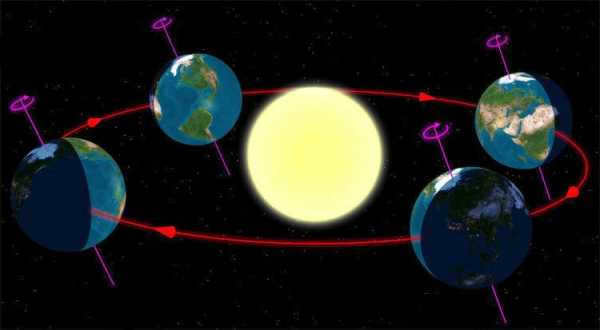
Similar to the rest of the celestial bodies in our solar system, our planet undergoes motion around its central star. The Earth follows a specific trajectory, known as an orbit. The parallactic displacement of stars and the aberration of starlight serve as evidence for the Earth’s movement along its orbital path. It takes one year for the Earth to complete a full revolution around the Sun.
Sun’s Movement
The Sun travels on the path known as the ecliptic, mirroring the Earth’s movement along its orbit. When the celestial sphere intersects the area of the Sun’s orbit, it creates a significant circle called the ecliptic. The plane of the celestial equator and the plane of the ecliptic intersect at an angle of 23°27′. These intersections give rise to the fall and spring equinoxes. On September 23 and March 21, the Sun is located at these points, transitioning between the northern and southern hemispheres.
Earth’s Path around the Sun
The shape, commonly known as an ellipse, represents the Earth’s orbit, with the Sun positioned at one of its focal points. The distance from the Sun to the Earth varies over the course of the year, ranging from 147 million km at perihelion to 152 million km at aphelion. In total, the orbit spans over 930 million km. The Earth’s barycenter moves from west to east, covering the entire distance at an average speed of approximately 30 km/s in a time period of 365 days 6 hours 9 minutes 9 seconds, which is known as a sidereal year.
The time period between two consecutive passages of the Sun through the vernal equinox is referred to as a tropical year. This duration is equivalent to 365 days 5 hours 48 minutes 46 seconds, which is 20 minutes shorter than a stellar (sideric) year. This phenomenon is known as the precession-induced advance of the equinoxes.
A result of the Earth’s orbit around the Sun
The modern calendar, known as the Gregorian calendar, has been adjusted to account for the length of the tropical year. However, it still has an error of 1 day every 2800 years. This means that even in 100,000 years, winter will still mainly occur during the winter months and summer will still occur during the summer months!
In the current era, the Earth’s axis of rotation is tilted at an angle of 66.5° to the orbital plane and remains parallel to itself as it moves throughout the year in space. This movement of our planet around the Sun is what causes the changing of seasons and the variation in daylight hours.
Because of the tilt of the Earth’s axis in relation to its orbit and the conservation of its position in space, the angle at which the Sun’s rays hit the Earth varies. This leads to significant differences in the amount of heat reaching the Earth’s crust and the lengths of day and night throughout the year at all latitudes, except at the equator where day and night are equal.
On June 22nd, the northern end of the Earth’s axis is directed towards the Sun, marking the summer solstice. On December 22nd, the southern end of the Earth’s axis is directed towards the Sun, marking the winter solstice. March 21st is the vernal equinox, and September 23rd is the autumnal equinox, when both hemispheres receive the same amount of light.
The orbit of the Earth around the Sun is a subject of investigation for many scientists in the solar system. It allows for the observation of the planet’s elliptical movement, the variations in seasons, the occurrences of fall and spring equinoxes, and the Lagrangian regions. This article will delve deeper into this concept.
Unique Orbital Characteristics of Earth
In the 16th century, Nicholas Copernicus initiated a revolutionary shift in astronomical understanding. Through his research, Copernicus demonstrated that the Sun occupies the central position in our solar system. In contrast, other celestial bodies, including our planet Earth, orbit around the Sun in what is known as the heliocentric model. Consequently, the Earth’s orbit around the Sun holds particular significance in the study of celestial mechanics.
Key Attributes of the Object Under Consideration
The Earth’s pathway around the Sun spans over a staggering 930 million kilometers. Our planet’s orbit around the celestial body known as the Sun follows a specific pattern. The velocity during this process amounts to 108,000 kilometers per hour. The duration of one complete revolution is 365.242199 solar days. Hence, every three years, an additional day is added to the calendar (thus making the total not 365 but 366).
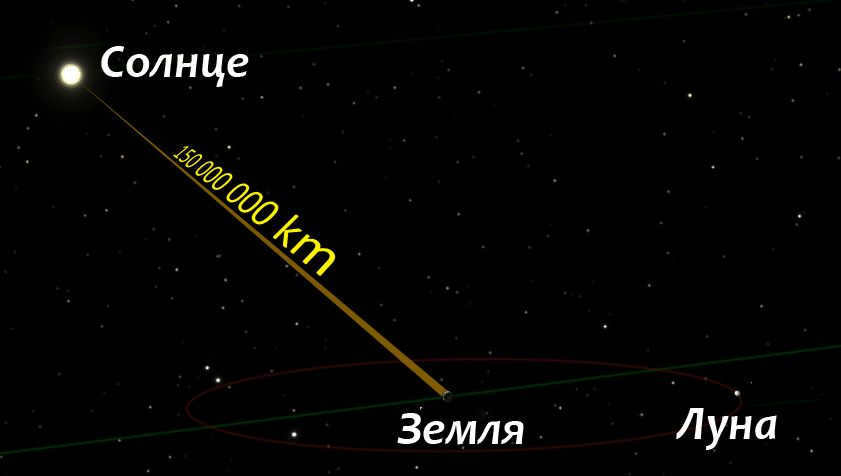
Average distance from the Earth to the Sun
As the Earth orbits the Sun, the distance between our planet and the natural celestial luminary experiences fluctuations. The point of closest approach, known as perihelion, occurs at a distance of 147,098,074 kilometers. The average distance between the Earth and the Sun is approximately 149.6 million kilometers. The greatest distance, also known as aphelion, is observed at a distance of 152,097,701 kilometers.
Considering the fascinating phenomenon of the Earth’s orbit, one can observe its unique characteristics, especially for those living in the northern hemisphere. People in this area may notice that temperature variations do not correspond to the distance parameter. This is because they experience different seasons based on the tilt of the Earth’s axis.
Elliptical Shape
The Earth does not orbit the sun in a perfect circle, but rather follows an elliptical path. This discovery was made by Johannes Kepler, who noticed a pattern in planetary motion and began studying it. He found that the Earth’s orbit is characterized by an elongated elliptical shape.
In addition to this, Kepler also measured the orbits of Mars and Earth and noticed that they alternately speed up and slow down. These changes in velocity corresponded with the positions of perihelion and aphelion. As a result, the distance from the sun is determined by the orbital velocity.
Scientists from various countries have started using the concept of eccentricity to describe the characteristics of elliptical planetary trajectories. In this particular case, the eccentricity ranges from 0 to 1. When the parameter approaches 0, it indicates a circular orbit. On the other hand, when it approaches 1, it signifies an elongated ellipse.
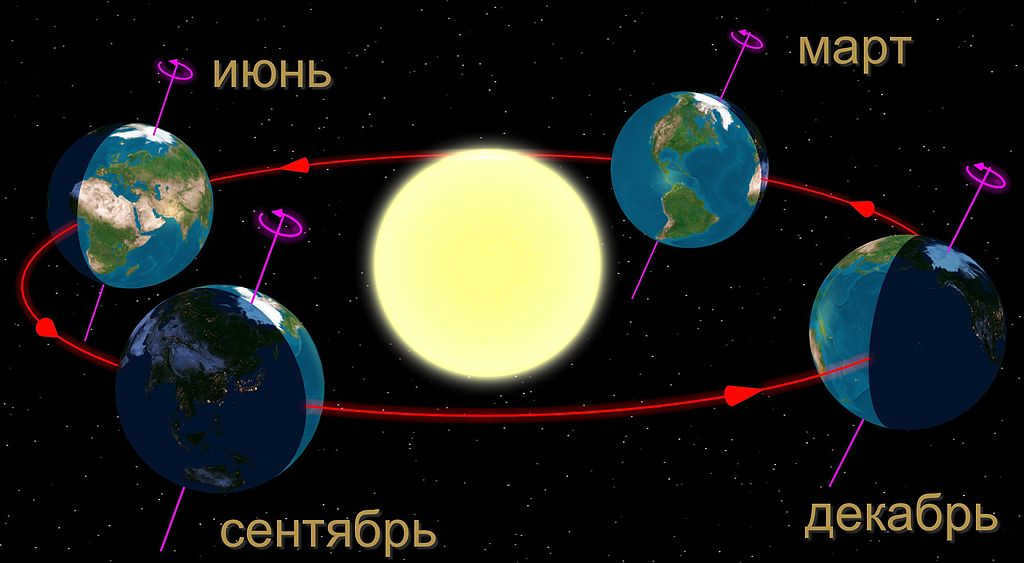
Seasons
Changes in the seasons
As you can observe, the Earth’s path around the Sun is referred to as an orbit. It is important to note the axial tilt as a significant factor. The four seasons that occur throughout the year are a direct result of this tilt, which is at an angle of 23.4 degrees. This leads to astronomical events known as equinoxes and solstices.
Lagrangian Points
As previously mentioned, the Earth’s orbit around the Sun is referred to as an orbit. It is distinguished by Lagrangian areas. The reality is that there are five such regions along our trajectory. Their combined gravitational force is centripetal and proportional. These regions are designated as L1 to L5. They are established along a straight line formed between the Earth and the Sun. However, they are not stable, so any satellite sent to these points would eventually drift away.
The angular parts of the two triangles formed contain points L4 and L5. In this scenario, the Sun and Earth are positioned at the lower part. Due to their persistence, these areas are considered the most advantageous zones for utilizing space telescopes and probes. Scientists are particularly interested in the orbit of not only our planet, but also other celestial bodies that are relatively close to Earth.
Hence, the path of Earth around the Sun is referred to as an orbit, which is not a perfect circle, but rather an ellipse.
Orbit of the Earth
In the 16th century, Nicolaus Copernicus revolutionized our understanding of the solar system by proving that the Sun is at the center and the other celestial objects revolve around it in a heliocentric system. But what about the Earth’s circular orbit?
Characteristics of Earth’s Orbit
The Earth travels around the Sun at a speed of 108,000 km/h and completes one orbit in approximately 365.242199 solar days. This is why we need to add an extra day every 4 years.
Throughout its orbit, the distance between the Earth and the Sun varies. At its closest point, known as perihelion, the distance is 147,098,074 kilometers. The average distance is approximately 149.6 million kilometers. The farthest point, known as aphelion, is 152,097,701 km.
If you reside in the northern hemisphere, you might have observed that temperature does not follow the rule of distance because it is influenced by the tilt of the Earth’s axis.
The elliptical path of Earth
No, the Earth’s path is not a perfect circle. It follows an elongated ellipse. Johannes Kepler was the first to describe this. The diagram illustrates the Earth’s orbital movement.
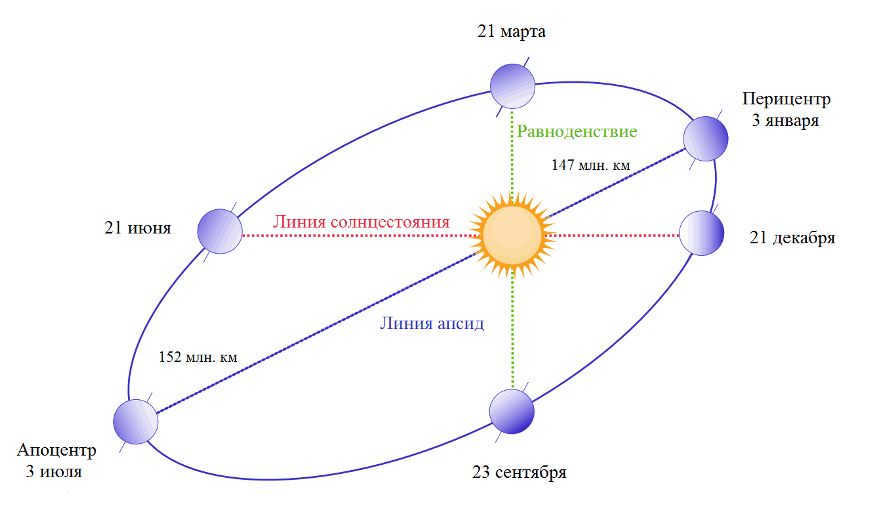
After analyzing the data collected from measuring the orbits of Earth and Mars, the scientist made an interesting discovery. It was observed that these planets experienced periodic changes in their speeds, alternating between acceleration and deceleration. This interesting phenomenon coincided with the aphelion and perihelion indices, which are indicators of the distance between the planets and the star they orbit. These observations led the scientist to conclude that the distance from the star plays a role in determining the orbital velocity, and that the orbits of Earth and Mars are not perfectly circular.
To better understand the nature of these elliptical orbits, researchers have introduced the concept of eccentricity. This concept assigns a value between 0 and 1 to the orbits, with values closer to 0 indicating a more circular orbit. In the case of Earth, the eccentricity value is approximately 0.02, which suggests that its orbit is very close to being circular.
The Earth’s axial tilt is a significant factor in the creation of our four seasons. It is the reason why we experience solstices and equinoxes. The axis is inclined at an angle of 23.4°, which causes the rotation to produce these seasonal changes.
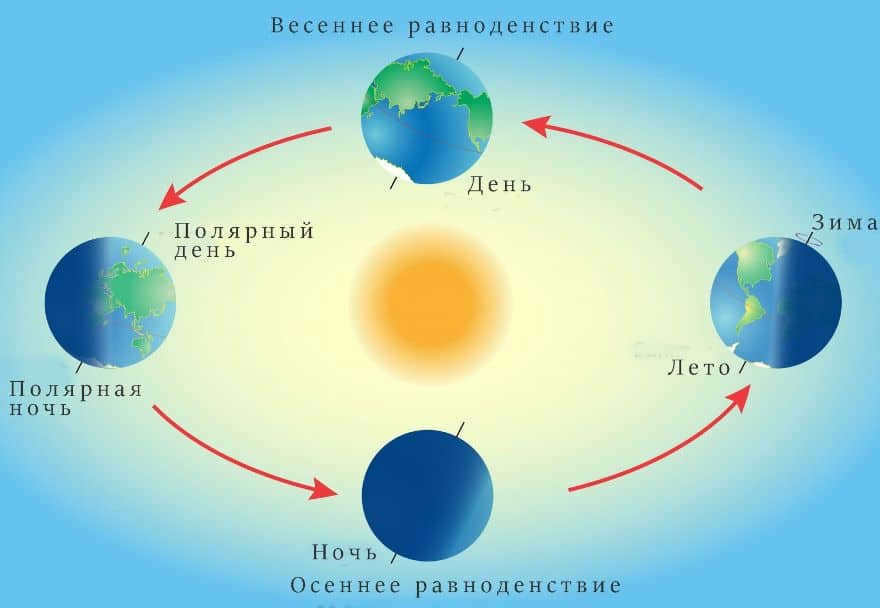
The orientation of the axis remains constant, leading to a redistribution of solar radiation.
In other words, when the northern hemisphere moves away from the Sun, it enters winter while the southern hemisphere experiences summer. After 6 months, they switch places. The winter solstice falls on December 21, the summer solstice on June 21, the spring equinox around March 20, and the fall equinox on September 23.
What are Lagrange points in space? This is also a fascinating topic. There are 5 points along our orbital path where the combined gravitational force between the Earth and the Sun provides a centripetal force.
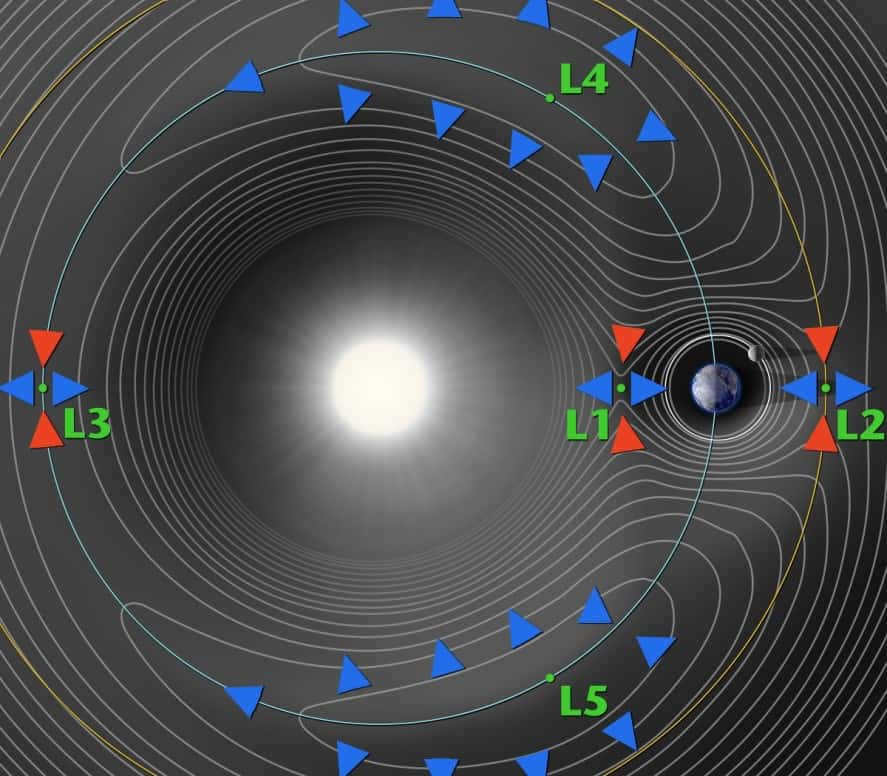
The points of Earth-Sun Lagrangian are known as L1 through L5. L1, L2, and L3 are positioned in a linear formation from our perspective to the Sun. These points are not stable, which means that if a satellite is sent there, it will shift its position.
L4 and L5 are located at the corners of two triangles, with the Sun and the Earth positioned at the bottom. These points are highly stable, making them ideal locations for probes and telescopes.
Studying the orbit of not only our own planet but also other celestial bodies in the solar system is crucial. The distance from a star often plays a significant role in determining the potential for life on a planet.
Which path does the Earth follow as it orbits the Sun?
It is common knowledge from our school days that the Earth revolves around the Sun. The orbit represents the course our planet takes as it travels around the star. Are there any distinctive characteristics to this path?
The form of the trajectory
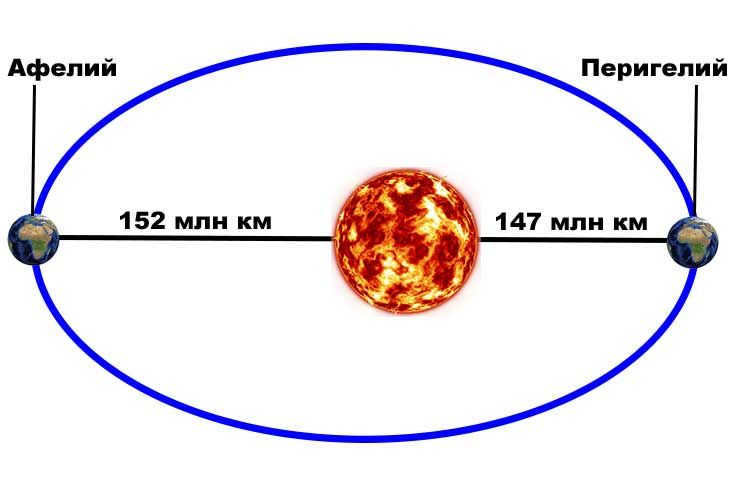
For a considerable amount of time, astronomers held the belief that the paths followed by celestial objects were circular. However, Johannes Kepler made the discovery that the planets, including our own Earth, actually travel along an elliptical path, with the Sun situated at one of the focal points of this ellipse.
An ellipse, resembling a flattened circle, possesses a parameter known as eccentricity. This parameter determines the degree to which the shape of the ellipse deviates from that of a perfect circle. The value of eccentricity can range from zero to one. In the event that it is equal to zero, the orbit becomes a flawless circle, with the star occupying the center. Earth has an eccentricity of 0.0167, signifying that our orbit is remarkably close to being circular.
Life on the planet depends on the Earth’s orbit radius, as it plays a crucial role in maintaining a stable average temperature. In contrast, the orbit radius of Mercury fluctuates between 46 and 70 million kilometers, with an eccentricity value of 0.2.
What is the distance between the Earth and the Sun?
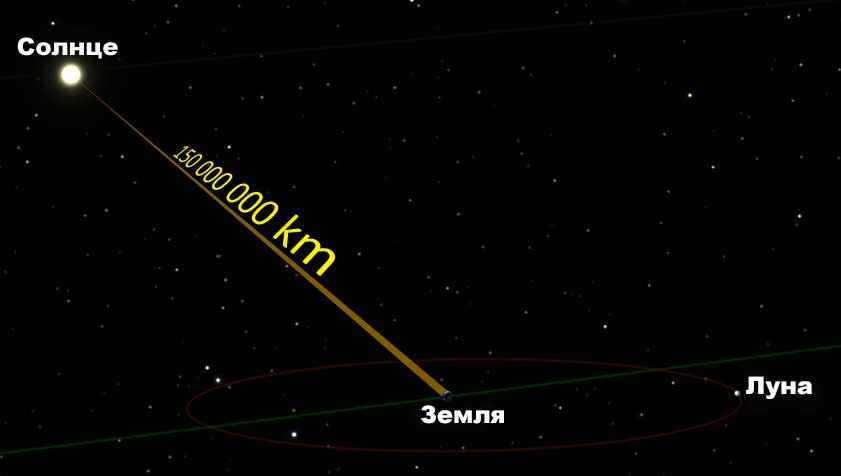
One astronomical unit, which is the unit of measurement of distances in outer space, is defined as the average radius of the Earth’s orbit. This radius is equal to 150 million km. The use of this unit has been historically convenient when describing the solar system.
The main idea is that it is much simpler to determine relative distances in space (for instance, to calculate that the radius of Venus’s orbit is 1.4 times smaller than the radius of Earth’s orbit) than to calculate absolute distances. For this reason, scientists established the distance between the Earth and the Sun as a standard unit and expressed all other linear dimensions in our solar system using it. It was only in 1672 that the Italian astronomer Giovanni Cassini managed to estimate the radius of Earth’s orbit at 140 million kilometers for the first time by measuring the parallax of Mars.
A more precise value for the astronomical unit was obtained in 1961 by Soviet astronomers through radiolocation of Venus. They determined the value to be 149,599,300±2000 km.
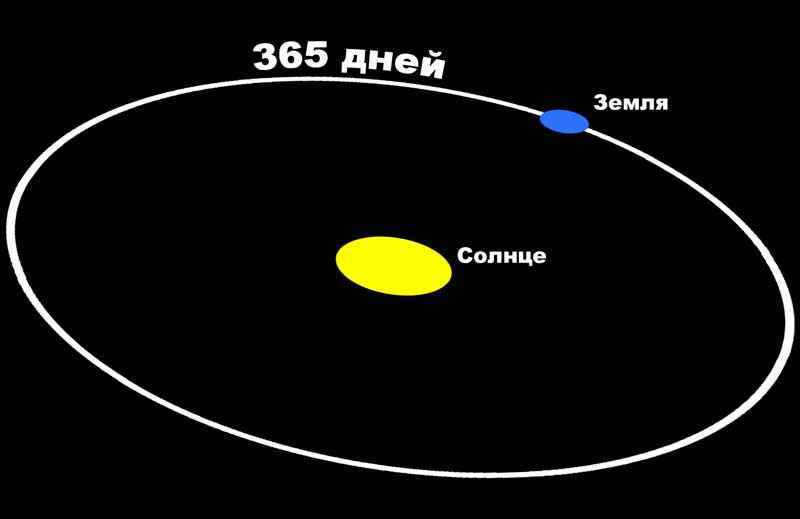
The Earth’s orbit has a total length of 940 million km, which it completes in 365.25 days, resulting in a leap year every four years with the addition of February 29. It is important to note that celestial bodies move at varying speeds throughout their orbits. The planets move fastest when they are in the pericenter, and slowest when they are in the apocenter. On July 3, the Earth reaches its aphelion and its speed decreases to 29.2 km/s. Conversely, on January 3, our planet reaches its perihelion and its speed increases to 30.2 km/s.
The trajectory of the satellite
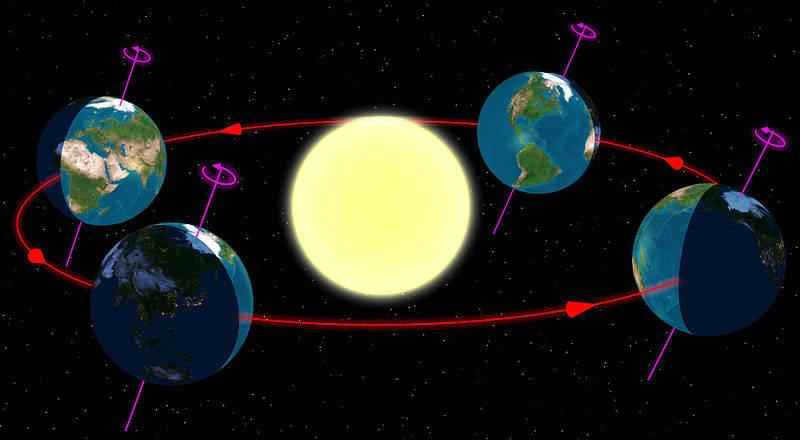
Every celestial body has a unique orbit, which is a two-dimensional shape where all the points lie in the same plane. The orbit of the Earth, in particular, is known as the ecliptic. It is interesting to note that the orbits of almost all the planets in our solar system are aligned with the ecliptic. The Earth’s axial tilt, which is at an angle of 23° to the ecliptic, has a significant impact on our weather patterns. This tilt causes uneven heating of the Northern and Southern Hemispheres at different parts of the Earth’s orbit, resulting in the seasons. For instance, when it is summer above the equator, it is winter below it, and vice versa.
The Sun also undergoes rotation around its own axis, along with all the planets revolving in sync with the star. This provides indirect proof that the material forming the planets and our star was once a unified cloud of gas and dust, which subsequently separated to create the building blocks for the planets. However, there exists one irregularity for which a satisfactory explanation remains elusive. The Sun itself deviates by six degrees from rotating in the ecliptic. Astronomers propose that this anomaly could potentially serve as indirect evidence of undiscovered planets within our solar system, which also follow non-ecliptic paths and exert gravitational influences that perturb the Sun’s axis of rotation.
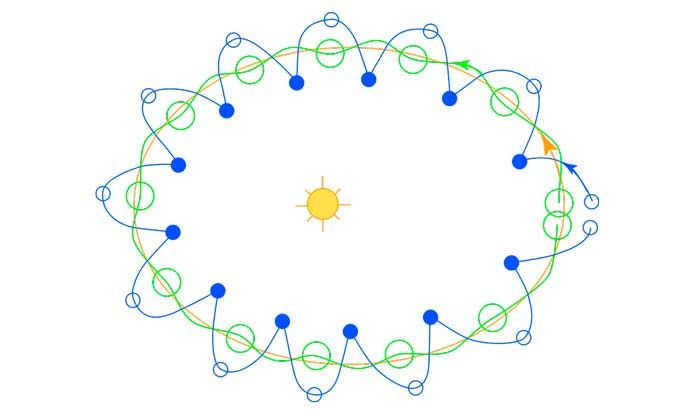
Kepler’s concept of celestial bodies orbiting in ellipses was a groundbreaking idea that accurately described the behavior of planets as observed in the 17th century. However, as measurements became more precise, deviations from Kepler’s laws began to be discovered. This was due to the fact that Kepler’s mathematical model was based on two simplifications:
- The mass of the planet is considered negligible compared to the mass of the star;
- Only the gravitational forces between the star and the planet are taken into account, while the influence of third bodies (such as other planets) is ignored.
In reality, things are naturally more complex. The more accurate way to consider it is that it is not the Earth itself that revolves around the Sun, but rather both objects revolve around a center of mass, known as the barycenter. However, due to the Sun’s massive size, the barycenter is located within it.
Precise astronomical measurements indicate that currently, the distance between the Earth and the Sun is gradually increasing at a rate of 15 centimeters per year. However, this does not imply that our planet will continuously move away from the Sun, as periods of separation can alternate with periods of convergence.
Take, for instance, the findings of astronomer Milutin Milankovic, who made a groundbreaking discovery that challenged the notion of a constant eccentricity in the Earth’s orbit. Instead, he found that this eccentricity undergoes cyclical changes over a span of approximately 100,000 years. During these cycles, the eccentricity can range from 0.005 to 0.05. It is these fluctuating eccentricities that serve as the driving force behind the occurrence of ice ages.
Is the Earth’s orbit stable?
Kepler’s laws state that the planets can orbit around the star indefinitely. However, deviations from these laws can lead to potential instability, resulting in the planets either leaving their orbits or falling into the star. Analytically calculating this is impossible, so computer modeling is necessary.
Based on calculations, the fate of the planets in the solar system cannot be predicted with certainty. In certain models, Mercury may either collide with the Sun or with Venus or Earth, potentially leading to collisions with other planets. However, these events would require billions of years to occur.
Earth is the only known planet that supports life. Discover more about the composition of our planet and its origins.
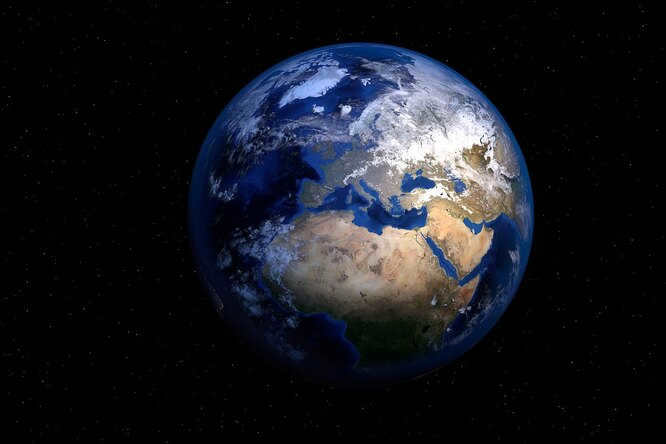
The Earth is positioned as the third celestial body from the Sun and it ranks as the fifth largest planet within the solar system. As researchers persistently explore for indications of extraterrestrial life, our precious abode remains unparalleled in terms of harboring known living organisms across the vast expanse of the universe.
While the Sun remains stationary, the Earth orbits around it, simultaneously spinning on its axis. This axis is an imaginary line that extends from the North Pole to the South Pole, passing through the Earth’s core. The rotation around this axis takes approximately 23.934 hours, determining our days, while the orbit around the Sun takes about 365.26 days, defining our years.
The Earth’s axis is tilted at an angle of 23.5° in relation to the plane of the ecliptic. This tilt is responsible for the changing seasons on our planet. The Earth is located in the “Goldilocks Zone” around the Sun, where the temperature is perfect for the presence of liquid water on our planet’s surface.
Formation and Evolution of the Earth
The Earth is believed to have originated approximately 4.6 billion years ago, during the same period as the Sun and the rest of the planets. This occurred when the solar system emerged from a massive rotating cloud of gas and dust referred to as the solar nebula. As the nebula contracted due to gravitational forces, it began to spin faster and transform into a flat disk shape. A significant portion of the materials within this disk were then drawn towards the center, ultimately resulting in the formation of the Sun. Simultaneously, particles within the disk collided and fused together, gradually forming larger entities, including our planet Earth.
According to scientists, the Earth was initially a dry mass of rock. The heat generated by radioactive materials in the rock and the increasing pressure deep inside the Earth caused the planet’s interior to melt, resulting in the formation of water and atmospheric gases. Recent findings indicate that the Earth’s crust and oceans may have emerged approximately 200 million years after the planet’s creation.
Structure of Earth’s Interior
The diameter of Earth’s core is approximately 7100 km, which is slightly more than half of the planet’s total diameter. The outer layer of the core spans 2250 km and exists in a liquid state, while the inner core is solid. The inner core has a diameter of around 2,600 km, making it about 80% larger than the Moon. One of the core’s important functions is generating the Earth’s magnetic field, which serves as a shield against harmful charged particles emitted by the Sun.
Above the core lies the Earth’s mantle, which has a thickness of about 2900 km. While the mantle is not entirely rigid, it can flow slowly. Similar to how a piece of wood floats on water, the Earth’s crust rests on the mantle. The gradual movement of rocks within the mantle leads to the shifting of continents, as well as the occurrence of earthquakes, volcanic activity, and the formation of mountain ranges.
Earth possesses two types of crust above the fireplace. The mass of land on the continents is primarily composed of granite and other light silicate minerals, whereas the oceanic floor is comprised of a dark and compact volcanic rock known as basalt. On average, the continental crust measures approximately 40 kilometers in thickness, although it may exhibit variations in thickness in certain regions. In contrast, the oceanic crust is typically only 8 km thick. The basaltic crust’s lower regions are inundated with water, giving rise to the Earth’s oceans.
The Earth is warmed by the sun’s heat, which is trapped by gases such as water vapor and carbon dioxide in the atmosphere. This phenomenon, known as the “greenhouse effect,” is crucial for maintaining suitable temperatures for life on Earth. However, an excessive greenhouse effect, as observed on Venus, can create extreme and inhospitable conditions.
Composition of Earth’s Elements
Oxygen dominates the Earth’s crustal rocks, accounting for approximately 47% of the total weight. Silicon is the second most prevalent element, making up 27% of the composition, followed by aluminum (8%), iron (5%), calcium (4%), and sodium, potassium, and magnesium (around 2%).
The Earth’s core is primarily composed of iron and nickel, with potentially smaller amounts of lighter elements like sulfur and oxygen. The mantle is made up of silicate rocks rich in iron and magnesium. Silica, a combination of silicon and oxygen, is present in these rocks, which are referred to as silicate minerals.

